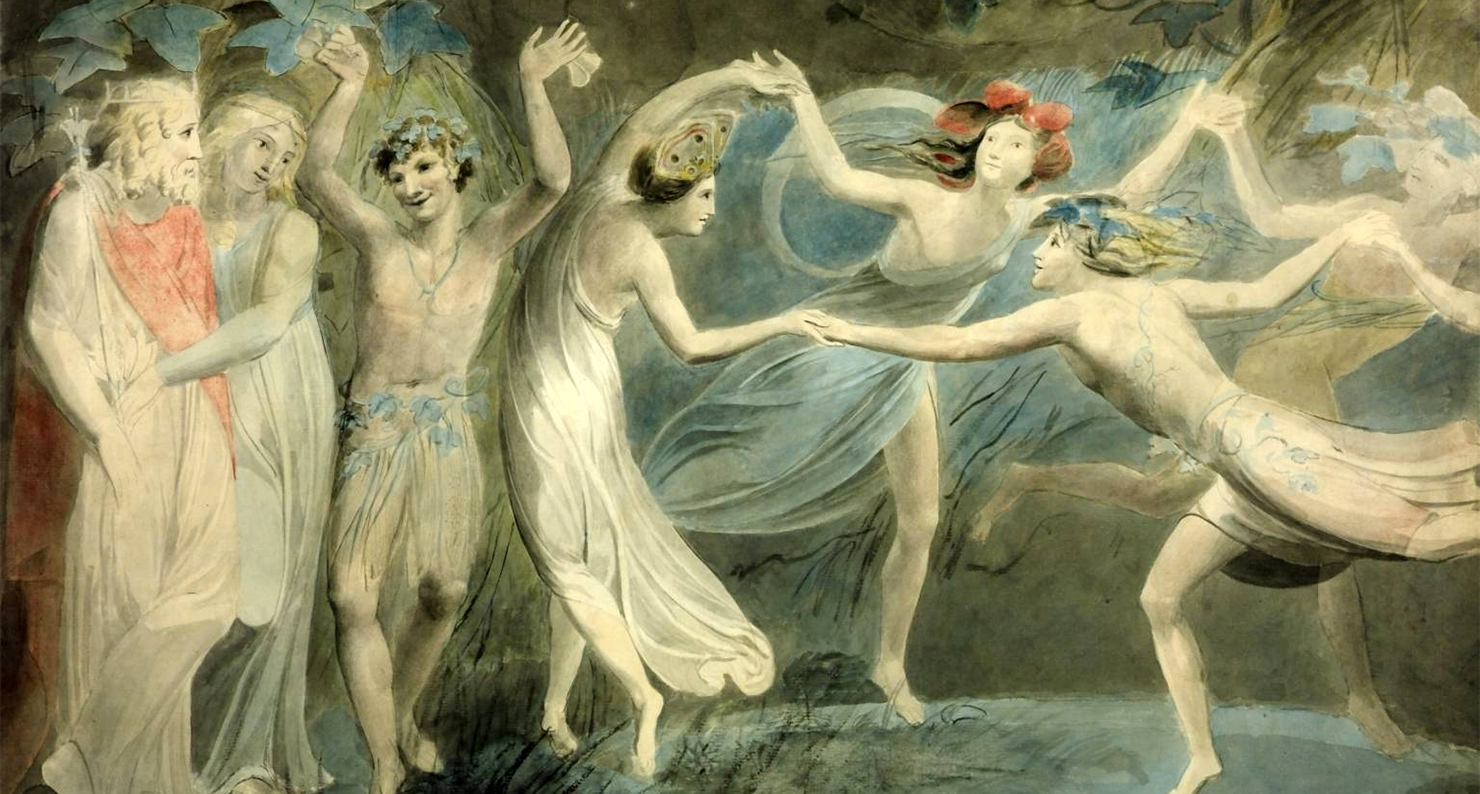
Oberon, Titania and Puck with Fairies Dancing, by William Blake, c. 1786. Tate Britain, presented by Alfred A. de Pass in memory of his wife Ethel.
Several years ago I found a dusty book in a used bookstore that had been inscribed as a gift to Ricardo in 1979: “Happy B-day to my favorite horror show lover, off-off-Broadway musician, and a wonderful wonderful friend—wishing you all the best ever—Hells.”
The book was full of drawings of faeries, elves, flowers, men kissing sphinxes, skeletons, men dancing with skeletons, and unsettling illustrations of women riding giant birds, all drawn by draftsman and artist Charles Altamont Doyle, father of Sir Arthur Conan Doyle, who created them while in an insane asylum called Sunnyside. The book was The Doyle Diary: The Last Great Conan Doyle Mystery: With a Holmesian Investigation Into The Strange And Curious Case of Charles Altamont Doyle, by Michael Baker. I bought the strange thing, of course.
Baker’s introduction to the notebook presents its existence and meaning as a mystery to be solved. Why have so many of Conan Doyle’s biographers only cursorily explored his father failing health? Was Charles Doyle really mad? What influence did his mental health have on Conan Doyle and on his work? To what extent did Charles actually believe in the faeries and elves he drew? And how did his beliefs influence Conan Doyle’s own belief in faeries, spiritualism, and the supernatural? And of course, are there any clues to be found in Sherlock Holmes stories?
It’s a lot of questions for one sketchbook of drawings to solve. And it’s hard to know a person’s heart, mind, and body from their finely rendered illustrations of ladies dressed as flowers. But a few details do reveal themselves.
First, Charles resented being institutionalized. On the first page of his journal he wrote: “Keep steadily in view that this Book is ascribed wholly to the produce of a MADMAN. Whereabouts would you say was the deficiency of intellect? Or depraved taste?” In addition, Charles was tormented. On one page he had drawn a rather terrifying portrait of himself in the mouth of an angry Sphinx, being devoured. Underneath he’s written: note: when i was drawing the royal institution, edinburgh, i was a good deal worried by sphinxes. The drawing is titled horrible fate of the artist worried by a sphinx.
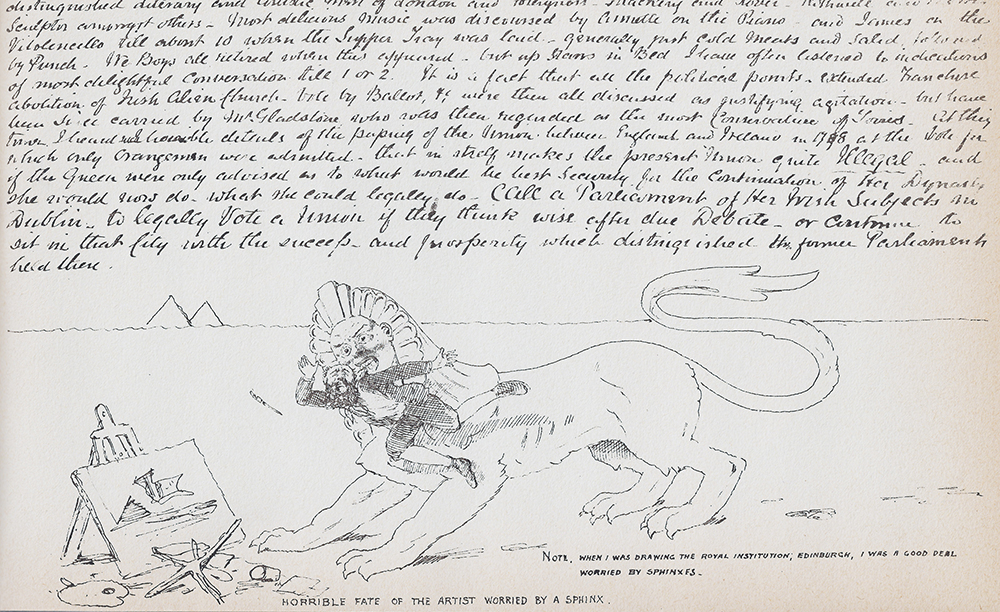
In another drawing, a girl with a worm in her hand telling a giant bird, get away and leave my poor blind worm alone.
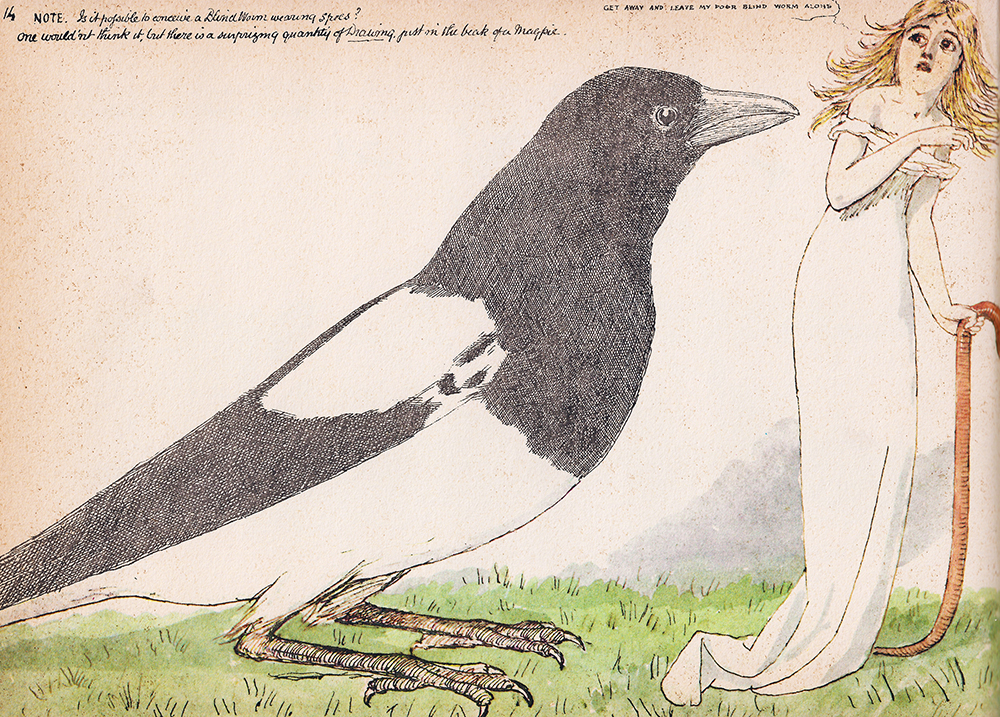
There is a portrait of the artist on a fainting couch looking ill and depressed, his angel floating above his body. In another, Charles shakes the hand of a skeletoned grim reaper. The caption? well met.
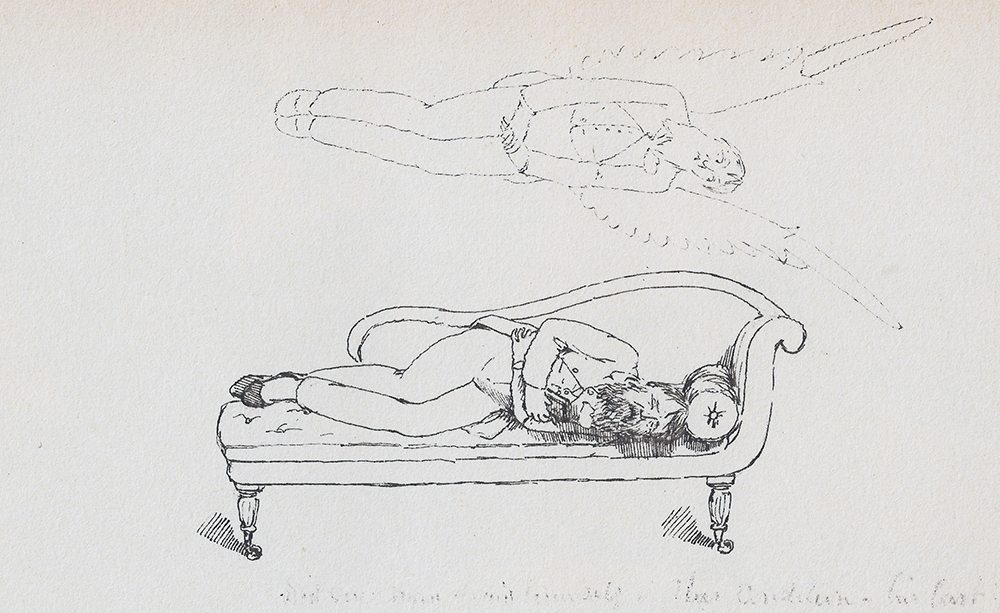
Among these disturbing images, there are also lovely, romantic Victorian drawings: a tracing of a Sycamore leaf, a pair of slim pixies riding in the antlers of a deer, watercolors of strolls and picnics through the grounds of Sunnyside, unicorns, angels, fair maidens, and dandelion puffs.
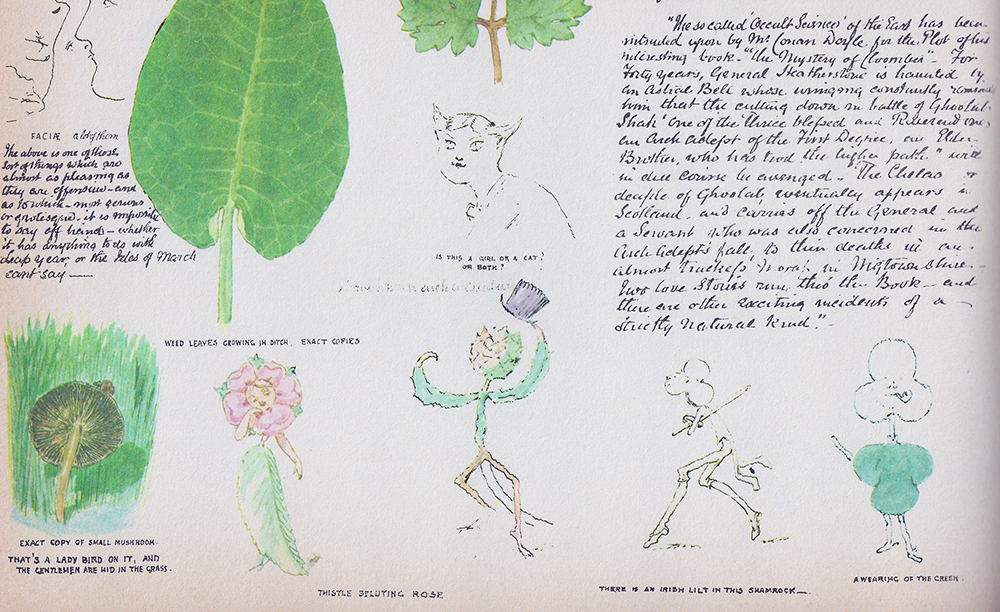
Most Arthur Conan Doyle fans know about his trouble with faeries. He was pilloried in the press for writing a book about his belief in the tiny creatures. Specifically, Doyle believed in the veracity of photographs of two young English girls from Cottingley posing with faeries and wood elves. The headline of one American magazine read “Poor Sherlock Holmes-Hopelessly Crazy: Conan Doyle, Who Has been Victimized by Transparent ‘Spirit’ Frauds, Now Offers Photographic Evidence That Fairies Really Exist Just Like the Story Books.” The irony of Doyle’s belief in the supernatural isn’t lost on any fan of Sherlock Holmes. How could the writer of the most famously perceptive, rational, and deductive literary character of all time be so blind, unreasonable, and impassioned about his belief in invisible creatures and other worlds?
Yes, the Charles Doyle diary is a clue. From here, Baker was able to pick up Charles’s trail to not one, but three asylums. He discovered that Charles was an alcoholic, and that his drinking had put him in his first institution and had also gotten him kicked out of it. At some point, perhaps because of withdrawal, Charles developed epilepsy, which was his stated cause of death on his death certificate. These details explain why the Doyle family, fiercely protective of its image, guarded Charles Doyle’s secret history. But the diary hints at something else—at Charles’s belief in faeries. There is a drawing of a chestnut sprig with the caption: i have seen a green lad just like it. And in another, a strange, devilish drawing of a cat woman. He has captioned her: is this a girl or a cat? or both? Written underneath: “I have known such a creature.”
Conan Doyle distanced himself from his father and was noticeably disappointed in him for leaving the family unsupported and vulnerable. Doyle writes in Memories and Adventures that his father’s life was, “full of the tragedy of unfulfilled powers and undeveloped gifts.” In The Life of Sir Arthur Conan Doyle, biographer John Dickson Carr explains, “As a boy, it is true, he had never been very fond of Charles Doyle. But in later years he came to understand what he had once considered indolence and weakness, and above all to admire the genius of the paintings on the wall in his study. It was his ambition … to make a collection of all his father’s work, one day, and to exhibit it in London.” Carr also claims that Doyle was sitting at his desk, smoking and staring at his father’s watercolors when he dreamed up Sherlock Holmes.
I’m no Doyle expert, but here’s where my mind goes: Conan Doyle’s belief in faeries was an act of revelation and forgiveness, a veiled acknowledgement of his father’s secret world. Maybe he just couldn’t suppress his love anymore.